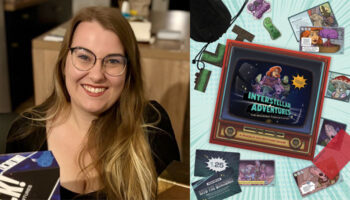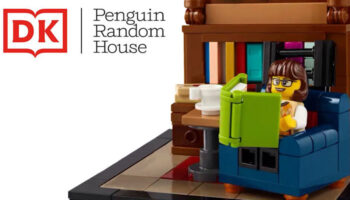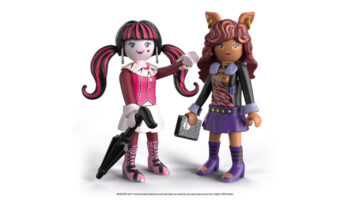Patrick Adom on founding Very Puzzled, a lack of representation, and early licensing deals

Patrick Adom, welcome! Thanks for making time.
Thanks for having me!
Not at all; my pleasure. Let’s start with an easy one… With what did you tend to play when you were growing up?
Growing up, I had an Amstrad CPC 464. I was a teenager at the time but that would be my favourite childhood toy. The ability to play different games, going to the shop and buying new games… Swapping games with friends at school, comparing them with friends and sharing information on how to get past certain parts was amazing.

Today, you’re the founder of Very Puzzled. How long have you been going?
We registered our company in 2017. Our first product was available to purchase in 2018, so we’ve been going five years now.
And so that we have a context, can you tell us about your products?
Our main product is a range of map-themed jigsaw puzzles. The maps feature different continents, countries and cities. Our aim is to take a specific place – Jamaica, for example – and showcase the history, major monuments and notable personalities that’ve positively shaped the country.
Can you give us an example?
Absolutely… As well as the culture and attractions, our South Africa map puzzle features Nelson Mandela, Miriam Makeba, Queen Nandi and Elon Musk. Our Jamaica puzzle has Usain Bolt, Bob Marley and Portia Simpson – Jamaica’s first female Prime Minister.

So quite a wide range of people. What’s your background, Patrick?
I have a bachelor’s degree in IT and an MBA in general management. I’ve worked as an IT consultant for the last 20 years. Other than transferable skills such as time management, project management, customer service and the like, I don’t have any experience of the toy industry.
Interesting – you’ve come in at the deep end, then! How did it come about?
It all happened quite quickly. As a father wanting to find products featuring black representation, I was getting my dad to send me books from Ghana. I had a wish list on amazon where I’d save books that had a main black character. I was also conscious to buy black dolls and other products –backpacks, for example – that featured black characters.
It’s fair to say that the UK mass-market isn’t awash with this kind of product… Why do you think that is?
I think the main reason is the perception that there isn’t a market for diverse toys. However, the world is very diverse… China, India and Africa each have a population of a billion people. In the UK, 13% of the population is from a minority ethnic background, with people from a minority background accounting for 40% of the population in London.
This population is going to grow, and more people will have family, friends and colleagues from a minority ethnic background – so this is a fast-growing demographic. In addition, diverse products aren’t just for ethnic minority population… We all love and enjoy food from around the world – why shouldn’t we love and enjoy diverse toys?

I’m curious, then: how did you go from being a frustrated consumer, thinking, “Minority representation is pretty poor” to “Here’s what I’m going to do about it!”?
Deciding to do something about it was a no-brainer: my other options were to accept the status quo, or just complain to the big manufacturers. My thought was to be the change. I was naïve, which was good in a way, and I was able to start with just one product. The cost was not very high so it was a small project to see if I could do it.
Terrific! And now you have quite a range. What’s the reception been like?
It’s been great – we’re very grateful for the support. We’re stocked in 60 independent retailers, as well as John Lewis. We get requests to do puzzles for countries such as Guyana and Sierra Leone for example. Our customers are also happy to share our products on social media, and have left nearly 300 reviews on our Trustpilot page.
So you’re finding an audience, and you have the John Lewis seal of approval which – in the UK at least – goes a long way in terms of quality assurance. All that must be very gratifying…
It is actually; yes. It’s very heart-warming to know that so many families have chosen to play with our products together… That’s our ultimate goal: to allow all families to spend quality time together.

Taking a peek behind the scenes, then, how did you develop the puzzles? And dare I ask… Who does the art work?
The puzzles themselves are printed in China. We have a top-secret illustrator, though, based in Russia, doing a fantastic job of making our puzzles bright and captivating. Our process for each puzzle is simple… For the focus of each puzzle, we look to highlight notable people that’ve contributed to the country, from a variety of professions. We make sure there’s a gender balance of the people that are featured.
Yes; I sense you’re choosing people and places and names and faces quite carefully. What’s your thinking there?
We’re thinking that, as well as doing the puzzle, we want families to have a discussion! We want them to learn about the people featured, and discuss why they’ve been featured, and question if someone else should have been featured instead.
Oh! Okay That’s an interesting thought; to explore that negative space… Who isn’t in the puzzle?! And could those conversations – theoretically – lead to design updates?
Yes. For us, launching a puzzle is straightforward… So going forwards, our goal is to let customers pre-order so we can get feedback on what puzzles customers want. In addition, we’ll be expanding our range to include other products such as a bingo game.
Terrific! You say launching a puzzle is straightforward. As a relatively new company, what’s proven to be your biggest challenge?
Connecting with buyers at the large retailers – and building a relationship with them even if they choose not to stock our products. Learning about – and navigating – the toy industry has been a challenge. It’s also been fun to connect with lots of different people from the industry, though… From press, such as Mojo Nation, and distributors and sales agents to licensing reps, retail buyers and everyone in between. It’s a fascinating, self-contained world that we’ve invited ourselves into and enjoy being a part of. We do feel that we’re getting more and more into the industry, and becoming more a part of it.

Well, yes; generally speaking, it’s a remarkably friendly industry. And looking at your website, I notice you also have other lines – football-club jigsaws. These are puzzles you assemble, then colour in! How did those come about?
We wanted to expand our range and do something different, we wanted to work with other well-known brands and reach a different audience while keeping our main goal of allowing families to spend quality time together.
Tell me about arranging licenses for that for those. Straightforward?
It was straightforward! Once Arsenal agreed to license us, they were able to introduce us to other clubs. Also, we attended the Licensing Week show and were able to meet with other clubs. In the end we had to decline a couple of clubs in Europe as we didn’t have the capacity.
How did Arsenal come about, then?
We initial reached out to them with a speculative email, and a very rough idea of what we wanted to offer. During our meetings with them, they walked us through how they work and what we could do together. It was a great learning experience for us.

Well, you’ve made that sound very straightforward! A great nut to crack. What’s next for you?
We’re going to continue expanding our product range, and working with independent and large retailers to get stocked in more shops in the UK and abroad… To develop the educational elements of our range and work with educators to build a value-added curriculum to our products. And to have more fun and enjoy the journey, while reaching more customers and allowing more families to spend quality time together.
Lovely. We need to start wrapping this up, Patrick, but what’s the one question I could’ve asked you, but didn’t?
What was the inspiration behind the brand?
And what’s the answer?
The inspiration behind Very Puzzled – and pretty much everything I do – is my daughter. She’s ten years old and is amazing. She’s the co-founder of Very Puzzled. I wanted to make sure she had a diverse range of toys to play with; toys that represented who she is, her heritage and culture. I also didn’t just want to tell her to follow her dreams, or that she could be whatever she wanted to be – but to actually embody the words, and be an example that she could see. I also wanted to build a legacy that she could be a part of.
Wow. Great answer. Alright, final question then Patrick… What’s the most interesting object in your office?
Probably my favourite object isn’t in the office… It’s a collection of pictures that are framed and stuck on the wall of the stairs in my house. Some of the pictures are of me and my siblings as children… The majority of them are of my daughter and her various certificates. It often makes me chuckle when I walk up or down the stairs and remember the different activities and adventures we we’ve had.
—
To stay in the loop with the latest news, interviews and features from the world of toy and game design, sign up to our weekly newsletter here






















